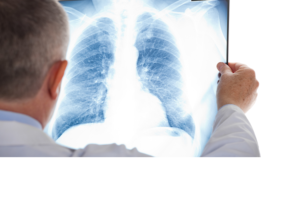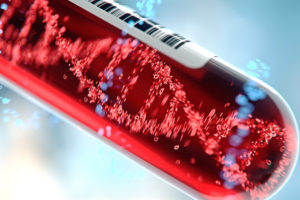COPD Pulmonary Disease Plasma Samples
Bay Biosciences provides high-quality, fresh frozen biopsy tissue samples. FFPE tissue blocks with matched fresh, frozen sera (serum), plasma, peripheral blood mononuclear cells (PBMC) bio-fluids from patients diagnosed with Chronic Obstructive Pulmonary Disease (COPD).
The sera (serum), plasma and PBMC biofluid specimens are processed from Chronic Obstructive Pulmonary Disease (COPD) patient’s peripheral whole-blood using customized collection and processing protocols.
Biopsy tissue and matched biofluid samples are collected from unique patients diagnosed with Chronic Obstructive Pulmonary Disease (COPD) and are provided to a valued pharmaceutical customer for research, diagnostics, discovery and drug development.
Sera (serum), plasma and peripheral blood mononuclear cells (PBMC) biofluids are processed from Chronic Obstructive Pulmonary Disease (COPD) patients peripheral whole-blood using customized collection and processing protocols.

Chronic Obstructive Pulmonary Disease (COPD) Overview
Chronic obstructive pulmonary disease (COPD) is a chronic inflammatory lung disease that causes obstructed airflow to and from the lungs. Over the period of time, COPD makes it harder to breathe.
COPD is primarily an umbrella term for two conditions, which are emphysema and chronic bronchitis. Patients with COPD may have one or both of these diseases, and the severity of each disease varies from patient to patient.
Emphysema damages the air sacs of the lungs. The lungs lose their elasticity and as a result are no longer able to exchange oxygen and carbon dioxide efficiently.
Chronic bronchitis involves inflammation of the lining of the airways. This results in increased production and thickening of mucus. Bronchitis becomes chronic when it persists and resists treatment.
Asthma symptoms may be part of COPD, and a history of asthma can increase the risk of developing chronic obstructive pulmonary disease (COPD). Asthma causes inflammation of the airways, which spasm and overreact to inhaled substances.
COPD is a lifelong issue involving irreversible damage to the lungs and worsening difficulty breathing and airway obstruction. A patient with advanced COPD may be unable to climb the stairs or live their daily life normally. They may need medications and supplementary oxygen to help them breath.
According to the centers for disease control and prevention (CDC) chronic obstructive pulmonary disease (COPD) is one of the top five leading causes of death in the United States.
Chronic Bronchitis
Chronic Bronchitis irritates the bronchial tubes, which carry air to and from the lungs. In response, the tubes swell and mucus builds up along the lining. The buildup narrows the tube’s opening, making it hard to get air in and out of the lungs.
Small, hair-like structures on the inside of the bronchial tubes called cilia, normally move mucus out of the airways. But the irritation from chronic bronchitis and smoking damages them. The damaged cilia can’t help clear mucus.
Emphysema
Emphysema is the breakdown of the walls of the tiny air sacs (alveoli) at the end of the bronchial tubes, in the bottom of the lung. The lung is like an upside down tree. The trunk is the windpipe or trachea, the branches are the bronchi, and the leaves are the air sacs or alveoli.
The air sacs play a crucial role in transferring oxygen into the blood and carbon dioxide out. The damage caused by emphysema destroys the walls of the air sacs, making it hard to get a full breath.

Signs and Symptoms of Chronic Obstructive Pulmonary Disease (COPD)
Chronic Obstructive Pulmonary Disease (COPD) makes it harder to breathe. Symptoms may be mild at first, beginning with intermittent coughing and shortness of breath.
As it progresses, symptoms can become more constant to where it can become increasingly difficult to breathe.
Patients may experience wheezing and tightness in the chest or have excess sputum production. Some patients with COPD have acute exacerbations, which are flare-ups of severe symptoms. Symptoms are likely to get much worse if you continue smoking or are regularly exposed to secondhand smoke.
Following are some of the common signs and symptoms of COPD:
- Cough with mucus that persists for long periods of time
- Difficulty taking a deep breath
- Dizziness
- Shortness of breath with mild exercise (like walking or using the stairs)
- Shortness of breath performing regular daily activities
- Wheezing
- A whistling or squeaky sound when you breathe
- Chest tightness
- Frequent colds, flu, or other respiratory infections
- Need to clear mucus from your lungs every day
- Chronic cough, with or without mucus
- Lack of energy
- Fatigue
- Fever
- Unexplained Weight Loss
- Swelling of the feet, ankles, or legs
Causes of Chronic Obstructive Pulmonary Disease (COPD)
Over time, exposure to irritants that damage the lungs and airways can cause chronic obstructive pulmonary disease (COPD), which includes chronic bronchitis and emphysema. The main cause of COPD is smoking, but nonsmokers can get COPD too.
Following are the main known causes of chronic obstructive pulmonary disease (COPD):
Smoking
Majority of all COPD cases, about 90% are caused by cigarette smoking. When a cigarette burns, it creates more than 7,000 chemicals, many of which are harmful. Tobacco smoke irritates airways, triggering inflammation (irritation and swelling) that narrows the airways.
Smoke also damages cilia so they can’t do their job of removing mucus and trapped particles from the airways.
Long-term exposure to lung irritants that damage the lungs and the airways usually is the cause of COPD. The most common irritant that causes COPD in the U.S. is cigarette smoke. Pipe, cigar, and other types of tobacco smoke also can cause COPD, especially if the smoke is inhaled.
In the United States, as many as 75% of the patients with chronic obstructive pulmonary disease (COPD) do smoke or did smoke in their life in the past.
Exposure to the toxins in cigarette smoke weaken the lungs defense against infections, narrow air passages, cause swelling in air tubes and destroy air sacs.
This also affects people who are not smokers themselves but are exposed to secondary smoke, from people who are smoking around them. Inhaling toxins are the main contributing factors for COPD.
Environment
Air quality in our environment plays an important part in developing COPD. What we breathe every day at home, at work and outside around our polluted environment can play a role in developing COPD.
Long-term exposure to pollutants in the air, secondhand smoke and dust, fumes and exposure to chemicals, which are most often worksite related can cause COPD.
Alpha-1 Deficiency
A small number of patients develop a rare form of COPD called Antitrypsin (Alpha-1) deficiency-related emphysema. This form of COPD is caused by a genetic (inherited) condition that is passed from parents to their children through their genes.
It affects the body’s ability to produce a protein (Alpha-1) that protects the lungs. Alpha-1 occurs when there is a lack of a protein in the blood called alpha-1 antitrypsin, or AAT.
The alpha-1 protein (AAT), is mainly produced by the liver. The main function of AAT is to protect the lungs from inflammation caused by infection and inhaled irritants such as tobacco smoke.
When someone has AAT, you don’t produce enough of the enzyme, called alpha-1 antitrypsin. Your lungs are more likely to become damaged from exposure to irritating substances like smoke and dust.

Risk Factors of Chronic Obstructive Pulmonary Disease (COPD)
If COPD develops before the age of 40, there is usually an underlying health issue, such as an alpha-1 antitrypsin deficiency.
Asthma can increase the risk of developing COPD because it inflames and narrows the airways. However, treatment can usually reverse any damage resulting from asthma.
- Asthma
- Exposure to air pollution and toxins
- Exposure to secondhand smoke
- Working with toxic chemicals, dust or fumes
- Being a woman
- Being over the age of 65
- Alpha-1 antitrypsin deficiency (AAT), a genetic risk factor to develop COPD.
- A history childhood respiratory infections
- A family history of COPD
Diagnosis of Chronic Obstructive Pulmonary Disease (COPD)
Various conditions can cause coughing and breathing problems. If a patient has COPD, these symptoms persist and worsen over time.
COPD diagnosis is based on symptoms, a physical exam, and diagnostic test results.
Some of the following diagnostics tests are performed:
- Spirometry is a noninvasive test to assess lung function (LFT). During the test, you’ll take a deep breath and then blow into a tube connected to the spirometer.
- Imaging tests include a chest X-Ray, CT scan. These images can provide a detailed look at your lungs, blood vessels, and heart.
- An arterial blood gas test involves taking a blood sample from an artery to measure your blood oxygen, carbon dioxide, and other important levels.
These tests can help determine if you have COPD or a different condition, such as asthma, a restrictive lung disease, or heart failure.
Treatment of Chronic Obstructive Pulmonary Disease (COPD)
There is no cure for chronic obstructive pulmonary disease (COPD). However, treatments can help with symptoms, slow the progress of the disease, and improve the patients ability to stay active.
Treatment involves managing the symptoms to improve the quality of life, reduce the risk of complications, and slow the progression of the health issues involved.
There are also treatments to prevent or treat complications of the disease.
Following COPD Treatments include:
- Lifestyle changes
- Medications
- Oxygen therapy
- Pulmonary rehabilitation
- Surgery
Stop Smoking
Quitting smoking can help improve COPD symptoms and slow its progression. Stopping smoking can also prevent COPD.
Avoiding Air Pollutants
Whenever possible, patients should avoid being exposed to air pollutants.
This may involve taking the following steps:
- Avoiding open fires
- Asking others not to smoke nearby
- Avoiding places where people are spraying paint or insect repellant
- Ataying home with the windows closed when air pollution levels are high
- Wearing protective gear, such as a mask, when working in a dusty environment
Drug Treatments
Medications can help manage COPD symptoms and prevent complications.
To help ease breathing, a doctor may prescribe an inhaler that contains a number of drugs. For example, to relax the muscles around the airways and make breathing easier, an inhaler may contain a medication called a bronchodilator.
An inhaler may also contain a glucocorticoid, a type of corticosteroids that can reduce inflammation in the airways.
Some inhalers are for short-term use. These medicines act quickly and are effective for a few hours. Theses can also make breathing easier during a COPD flare-up. Others are for long-term, daily use.
During follow-up visits, the doctor may adjust the medication regimen to help control worsening symptoms and flare-ups.
They may also recommend antibiotics to manage any acute bacterial infection that develops, as well as vaccination to ward off the flu and pneumonia.
A patient with COPD who has effective inhaled treatment may still experience reoccurring flare-ups that require hospital care.
In this case, the doctor may recommend the oral anti-inflammatory medication roflumilast (Daliresp) or the oral antibiotic azithromycin (Zithromax) to reduce the frequency of flare-ups. Doctors largely base their choice on anticipated side effects.
Oxygen Therapy
If blood oxygen levels are low, a doctors may recommend this treatment, which involves breathing oxygen through a device, a mask or nasal prongs attached to a oxygen tank.
Patients can use this at home, either continuously or only at certain times of the day.
Surgery
Some procedures that may be an option for certain people with COPD include:
- A single or double lung transplant
- A bullectomy to remove the larger air sacs that affect breathing
- Placement of endobronchial valves in the part of the lung with the most damage
- Removal of damaged lung tissue, known as lung volume reduction surgery
A surgeon requires special training and equipment to place endobronchial valves.

Bay Biosciences is a global leader in providing researchers with high quality, clinical grade, fully characterized human tissue samples, bio-specimens and human bio-fluid collections.
Samples available are cancer (tumor) tissue, cancer serum, cancer plasma cancer PBMC and human tissue samples from most other therapeutic areas and diseases.
Bay Biosciences maintains and manages its own bio-repository, human tissue bank (biobank) consisting of thousands of diseased samples (specimens) and from normal healthy donors available in all formats and types.
Our biobank procures and stores fully consented, deidentified and institutional review boards (IRB) approved human tissue samples and matched controls.
All our human tissue collections, human specimens and human bio-fluids are provided with detailed samples associated patient’s clinical data.
This critical patient’s clinical data includes information relating to their past and current disease, treatment history, lifestyle choices, biomarkers and genetic information.
Patient’s data is extremely valuable for researchers and is used to help identify new effective treatments (drug discovery & development) in oncology, other therapeutic areas and diseases.
Bay Biosciences banks wide variety of human tissue samples and biological samples including cryogenically preserved at – 80°C.
Including fresh frozen tissue samples, tumor tissue samples, FFPE’s, tissue slides, with matching human bio-fluids, whole blood and blood derived products such as serum, plasma and PBMC’s.
Bay Biosciences is a global leader in collecting and providing human tissue samples according to the researchers specified requirements and customized, tailor-made collection protocols.
Please contact us anytime to discuss your special research projects and customized human tissue sample requirements.
Bay Biosciences provides human tissue samples (human specimens) from diseased and normal healthy donors which includes:
- Peripheral whole-blood,
- Amniotic fluid
- Bronchoalveolar lavage fluid (BAL)
- Sputum
- Pleural effusion
- Cerebrospinal fluid (CSF)
- Serum (sera)
- Plasma
- Peripheral blood mononuclear cells (PBMC’s)
- Saliva
- Buffy coat
- Urine
- Stool samples
- Aqueous humor
- Vitreous humor
- Kidney stones (renal calculi)
- Other bodily fluids from most diseases including cancer.
We can also procure most human bio-specimens and can-do special collections and requests of human samples that are difficult to find. All our human tissue samples are procured through IRB approved clinical protocols and procedures.
In addition to the standard processing protocols Bay Biosciences can also provide human plasma, serum, PBMC bio-fluid samples using custom processing protocols, you can buy donor specific sample collections in higher volumes and specified sample aliquots from us.
Bay Biosciences also provides human samples from normal healthy donors, volunteers, for controls and clinical research, contact us Now.
日本のお客様は、ベイバイオサイエンスジャパンBay Biosciences Japanまたはhttp://baybiosciences-jp.com/contact/までご連絡ください。


